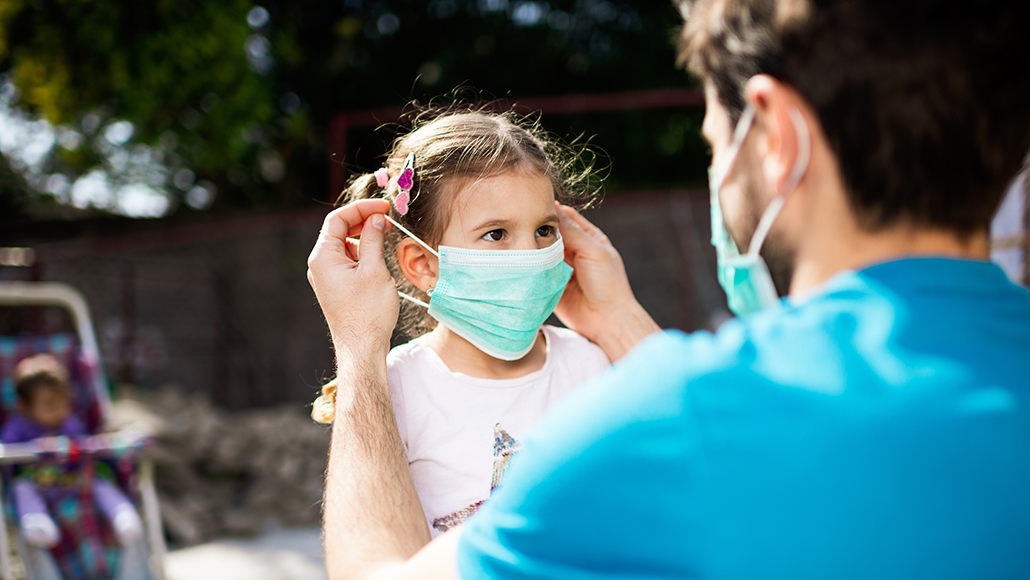Kids can develop severe complications from COVID-19 in rare cases
A severe inflammatory syndrome may also be related to a coronavirus infection

While children don’t appear to develop severe cases of COVID-19 as frequently as adults, a small number have developed life-threatening symptoms.
SanyaSM/E+/Getty Images
- More than 2 years ago
Although severe illness with COVID-19 remains rare among children, they are not immune from life-threatening complications. And an emerging inflammatory syndrome may also be connected to the coronavirus.
New York has 93 children with the syndrome, called pediatric inflammatory multisystem syndrome, which appears to be related to having had COVID-19. Three children have died, and two more deaths are being investigated, Governor Andrew Cuomo said in a news conference May 10.
Physicians are also reporting children with the syndrome — which occurs four to six weeks after an infection — in a few other states as well as some European countries. Symptoms of the inflammatory illness include a persistent high fever, low blood pressure and abdominal pain. The illness can look similar to other inflammatory conditions in children, including toxic shock syndromes and Kawasaki disease, which causes inflammation in the blood vessels.

Trustworthy journalism comes at a price.
Scientists and journalists share a core belief in questioning, observing and verifying to reach the truth. Science News reports on crucial research and discovery across science disciplines. We need your financial support to make it happen – every contribution makes a difference.
Overall, though, severe illness has been less frequent in children than adults with COVID-19, researchers say. A study that looked at 46 North American pediatric intensive care units from March 14 to April 3 documented just 48 children with COVID-19 admitted for intensive care at 14 of the hospitals. The kids were largely in the age range of 4 to 16, and some became very sick.
Thirty-five of the children had respiratory symptoms, with 18 needing ventilation, researchers report May 11 in JAMA Pediatrics. Seventeen became critically ill, developing respiratory failure, acute respiratory distress syndrome, severe inflammatory symptoms, multi-organ failure or several of these complications. Forty of the children had underlying medical conditions, such as cancer or obesity (SN: 4/22/20).
As of April 10, two of the children had died, and 15 remained hospitalized. The mortality, less than 5 percent in this group of kids, is much lower than what other studies have reported for adults in the intensive care unit, ranging from 50 to 62 percent.
“COVID-19 producing critical illness in children remains very infrequent compared to adults up to this point in the pandemic,” says coauthor Jeffrey Burns, a pediatric critical care specialist at Boston Children’s Hospital.
According to the U.S. Centers for Disease Control and Prevention, the highest hospitalization rate for COVID-19 continues to be among the oldest age groups. As of May 2, the rate for those 65 and older was 162.2 per 100,000 people, and it was 79 per 100,000 for 50- to 64-year-olds. In comparison, the very youngest, ages 0 to 4, are being hospitalized at a rate of 2.4 per 100,000, and for 5- to 17-year-olds, it’s only 1 in 100,000.
Along with children seeming to have fewer severe cases of COVID-19 than adults, kids appear to have fewer bouts of the illness in the first place. A study to determine whether that’s because kids get the infection less frequently than adults, or because children do get the infection but don’t often develop symptoms, has begun enrolling patients.
Called Human Epidemiology and Response to SARS-CoV-2, or HEROS for short, the study will enroll 6,000 people from 2,000 U.S. families and follow them for six months. Families will collect nasal swabs and blood samples and send them to a lab, along with completing questionnaires about symptoms, social distancing practices and possible exposures to sick people. The goal is to gain an understanding of the extent of infection among children beyond those who have come to the attention of doctors.
Sign up for our newsletter
We summarize the week's scientific breakthroughs every Thursday.







